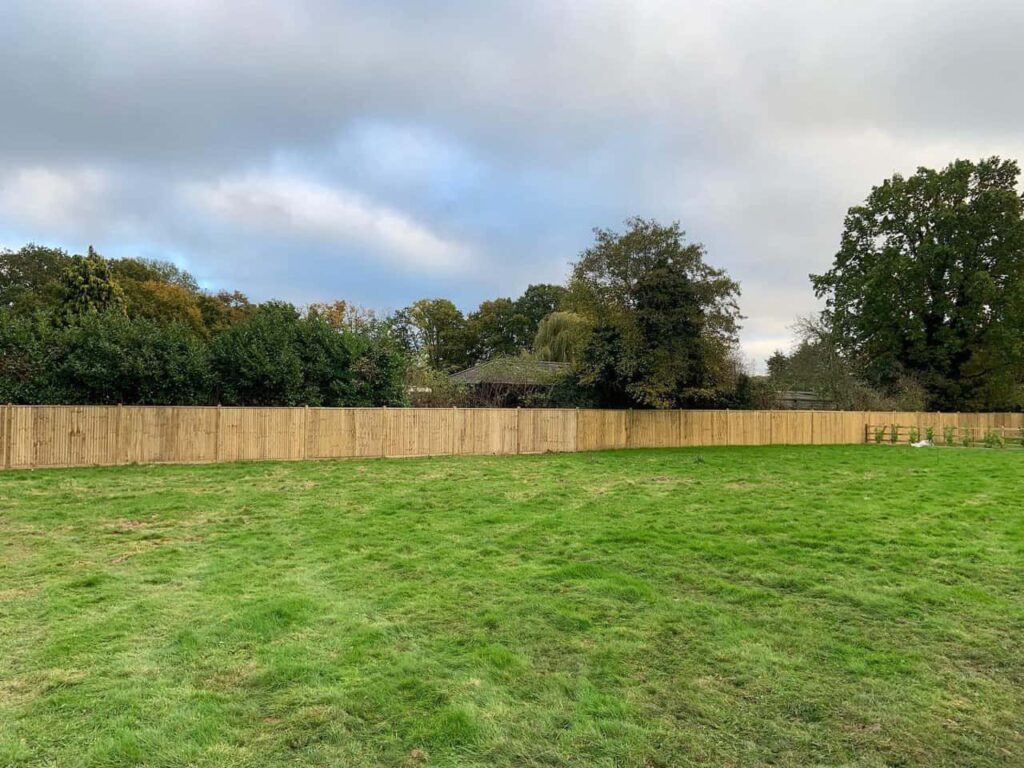The Environmental Benefits of Using Sustainable Wood for Fencing
Introduction: When choosing materials for your fencing project, sustainability should be a top priority. Sustainable wood, often sourced from responsibly managed forests, offers a range of environmental benefits that go beyond aesthetics. In this blog post, we’ll explore the advantages of using sustainable wood for fencing and why it’s an eco-friendly choice for your outdoor projects.
- Reduced Carbon Footprint: One of the primary environmental benefits of using sustainable wood for fencing is its ability to help reduce your carbon footprint. Sustainable wood is typically harvested from forests where trees are replanted after they are cut down. This ensures a continuous cycle of carbon absorption, making wood a carbon-neutral material. In contrast, non-sustainable practices can contribute to deforestation and increased carbon emissions.
- Preservation of Biodiversity: Forests that practice sustainable management often prioritise biodiversity conservation. By choosing wood sourced from responsibly managed forests, you support efforts to protect diverse ecosystems and wildlife habitats. Sustainable forestry practices aim to maintain a healthy balance between logging activities and preserving the natural environment.
- Forest Regeneration: Sustainable forestry practices include the replanting of trees after harvesting. This ensures the regeneration of the forest and helps maintain its long-term health. As a result, sustainable wood fencing contributes to the ongoing growth and vitality of forests, which are essential for global climate regulation and maintaining ecological stability.
- Reduced Pressure on Old-Growth Forests: Old-growth forests, which are rich in biodiversity and play a crucial role in carbon storage, are threatened by unsustainable logging practices. Choosing sustainable wood for your fencing needs reduces the demand for timber from these precious ecosystems. This, in turn, helps protect old-growth forests from being further depleted.
- Support for Sustainable Forestry Practices: By selecting sustainable wood products, you support responsible forestry practices. This conveys to the timber industry that consumers value environmentally friendly options. Your choice encourages the industry to continue adopting sustainable methods and certifications.
- Longevity and Durability: Sustainable wood is often high quality and treated to resist decay, insects, and weathering. This means that your sustainable wood fence is built to last, reducing the need for frequent replacements and the associated environmental impacts of production and transportation.
- Recyclability and Biodegradability: Wood is a natural material that is both recyclable and biodegradable. If you ever decide to replace your sustainable wood fence, the wood can be repurposed or allowed to decompose naturally without causing harm to the environment.
Conclusion: Choosing sustainable wood for your fencing projects is a conscientious choice with numerous environmental benefits. By supporting responsible forestry practices, reducing carbon emissions, and preserving biodiversity, you not only contribute to a greener planet but also enjoy the durability and natural beauty of wood in your outdoor space. When selecting fencing materials, prioritise sustainability to create a more eco-friendly and sustainable future.
Call us on: 01892 362 993
Click here to find out more about Fast Fix Fencing Tunbridge Wells
Click here to complete our contact form and see how we can help with your fencing needs.

